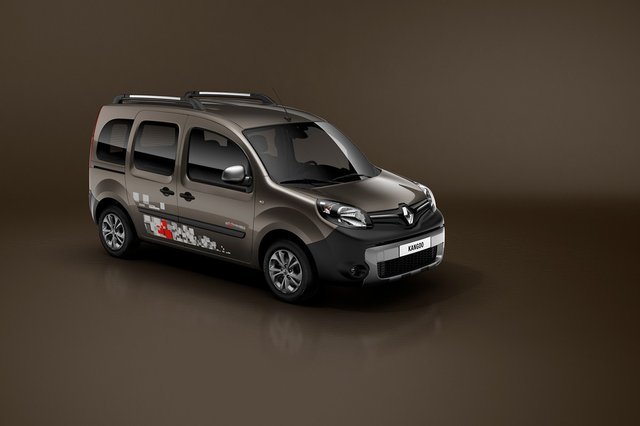Renault Kangoo Facelift Unveiled Ahead of Geneva 2013 Launch

The facelifts sport Renault’s new family identity with the new front grill where the Renault Lozenge is ensconced in the middle. The bumper is new and is wider than before. The passenger variants are differentiated from the load carrying variants by glossy black finish for the radiator grill. Some variants of the car sport smoked headlamps.
The rear gets new tail lamps and except that there is nothing much worth mentioning. The interior however gets a new dashboard layout.
There is an apparent improvement in the quality of the materials and the dashboard design is a far cry from the current car which gets its first major upgrade since its introduction in 1998. The steering wheel has been carried over from the Renault Fluence and the gear shifter knob has been moved to the dashboard.
The facelifted Kangoo and the Grand Kangoo get two new variants namely Extrem and Business. The fully loaded Extrem variant gets off road package, body decals, dual tone front bumper with black and dark metal finish, 15″ gloss black alloy wheels, roof rails and added equipment such as R-Link touch screen multimedia infotainment system, ESC with hill start assist and Extended Grip which sends additional power to the front wheels if situation demands it.
The facelifted Kangoo and Grand Kangoo get the famous 1.5 litre DCi diesel engine (K9K) in three states of tune – 75 bhp, 90 bhp and 110 bhp. There is also a 1.2 litre turbocharged direct injection petrol motor which pumps out 115 bhp.
The facelifted Kangoo will make its public debut at the Geneva Motor Show next week. Renault has moved the Kangoo a few notches higher as the Dacia version, dubbed Dokker, is a rebadged version of the pre-facelift Kangoo targeted at the lower rung of the market.
Nouvelles connexes


